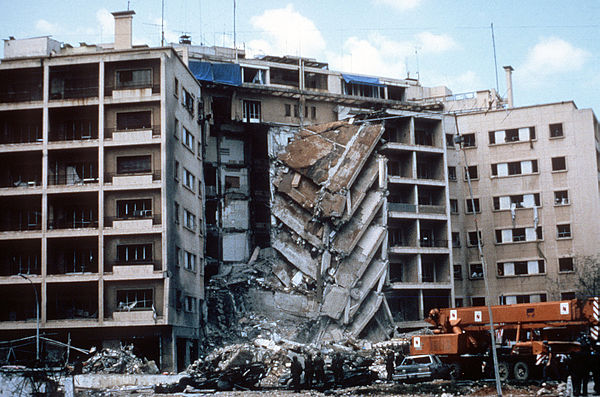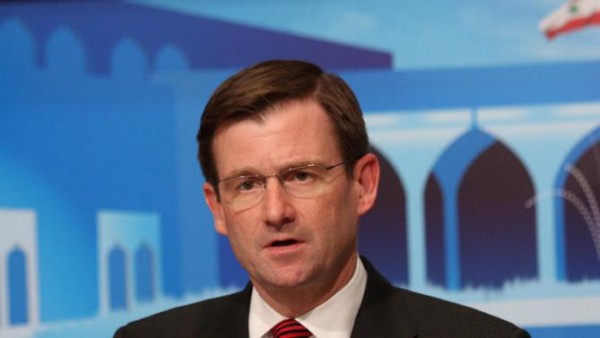U.S. Ambassador to Lebanon David Hale announced on Wednesday plans to build a new embassy, which he said will give the mission more space to deepen ties between the two countries, according to a report by NNA
“The new facilities, which will be located next door to the current embassy in the town of Awkar, is just one more example of the enduring partnership that exists between the United States and Lebanon,” said Hale following talks with Ambassador Charbel Wehbe at the Foreign Ministry.
“The new embassy will give us more space to advance our common interests and reflect the growing and deepening ties between our two countries,” Hale said.
“It will reflect a continued American commitment to and investment in Lebanon,” the ambassador said.
“America will be here for years to come to work with the Lebanese people for a secure, stable, prosperous, sovereign, and free Lebanon,” he added.
According to Hale, the new project represents a nearly $1 billion dollar investment by the U.S. government in the partnership between Washington and Beirut.
“The new embassy will be a sustainable and eco-friendly facility for American diplomacy in Lebanon,” he said.
This means the mission “will reduce its environmental impact while enhancing the space around it,” the diplomat added.
Here is a full text of Hale’s remarks
I wish to thank the Ministry of Foreign Affairs for hosting us. I just finished a productive meeting with Ambassador Charbel Wehbe. Today, I am pleased to announce the plans for the construction of a new American Embassy in Lebanon. This project represents a nearly $1 billion dollar investment by the American government in our partnership between America and Lebanon and our long-term commitment to this partnership.
We won’t be moving far. Our new facilities will be located just next door to the current embassy, still in Awkar, which has been our home for many years. The final design for the new embassy takes into account the topography of this particular site. As you will see from the design, the new embassy will maintain a low profile along Awkar Road. The areas of the embassy that will be frequented by the public — the consular and public diplomacy sections — are designed to create a pleasant experience for our visitors. American and Lebanese art will be installed in these areas.
The new embassy will be a sustainable and eco-friendly facility for American diplomacy in Lebanon. The design meets rigorous energy-saving and sustainability goals and will take advantage of the mild Mediterranean climate to reduce energy usage. Landscaping and rock-scape roofs across the embassy will use water-saving native plantings. Large areas of natural vegetation throughout the site will be left intact to preserve the local ecosystem. Durable, locally sourced materials, such as sculpted, pre-cast concrete, stone, and metal panels, will be used to improve longevity and reduce energy used during construction. Our priority on energy-savings and sustainability will mean that the new embassy will reduce its environmental impact while enhancing the space around it.
Today’s announcement is just one more example of the enduring partnership that exists between the United States and Lebanon. The new embassy will give us more space to advance our common interests and reflect the growing and deepening ties between our two countries. It will reflect a continued American commitment to and investment in Lebanon. America will be here for years to come to work with the Lebanese people for a secure, stable, prosperous, sovereign, and free Lebanon.
Former embassy

In May 30, 2003 Judge Royce Lamberth of U.S. District Court in Washington, D.C. , had determined that the bombing was carried out by the Islamist Shiite militant group Hezbollah with the approval and financing of senior Iranian officials, paving the way for the victims to seek damages.

Leave a Reply
You must be logged in to post a comment.